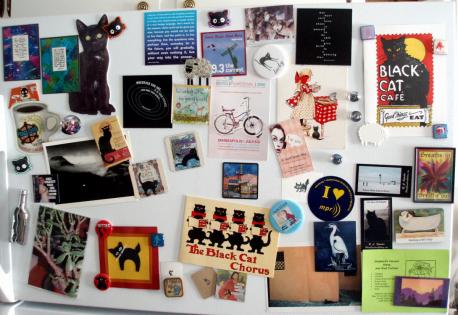What’s on the outside of your fridge door says much more about the minutiae of your daily life than what’s inside it.
It could be where you have the electrician’s phone number, the date of your next dentist appointment, your pre-schoolers latest work of art, alphabet magnets and a family photo.
Generally, how much is clinging to your fridge door is a good indicator of the clutter in the rest of your home and provides a strong clue to how people feel when they walk through the front door.
This is according to a team of archaeologists, anthropologists and other social scientists from the University of California who conducted a systematic five-year study of home life in 32 middle class dual income families in Los Angeles. In their book entitled Life at home in the 21st Century: 32 families open their doors, the researchers said that our preoccupation with ‘things’ has created a “clutter culture” and is a leading cause of stress.
The rigorously documented book presents a troubling picture: costly but virtually unused ‘master suites’; children who rarely go outside; stacks and stacks of clutter; entire walls devoted to displays of Barbie dolls, Beanie Babies and other toys; garages so packed with household overflow that cars have to be parked on the street.
Findings include:
- Managing the volume of possessions was such a crushing problem in many homes that it actually elevated levels of stress hormones for mums.
- Only 25% of garages could be used to store cars because they were so packed with stuff.
- The addition of costly ‘master suites’ for parents proved the most common renovation in the homes that were studied, yet the spaces were hardly used.
- Consistent and troublesome bottlenecks emerged in the homes, yet families rarely devoted renovation dollars to remedying these obvious problems.
- Buying in bulk meant that families could have more than enough units of common household items (eg. cleaners, toilet paper) and nowhere to put them.
- Even in a region with clement year-round weather, the families hardly used their yards, and this was the case even among those who had invested in outdoor improvements and furnishings.
- Fragmented dinners — those in which family members eat sequentially or in different rooms — threaten to undermine the family dinner.
The book focuses on the physical surroundings of the families and, in the parlance of anthropologists, their "material culture," a subject that includes everything from art and trophies to televisions and outdoor furnishings.
Check out the links below for some other tips on organising your household, in addition to this quick and easy ones to help de-clutter at very little cost.
1. Use plain white boxes, labelled and stacked in a bookcase or shelf to create an effective and stylish storage solution. Depending on the room, bring some creative flair to it by making nice looking labels – perhaps colour-coded – to help you look for what you need.
2. Encourage kids to put things away and to keep play areas tidy by labelling containers and drawers.
3. Outdoor toys need organising too. Get things under control by putting things in plastic buckets or tubs and storing them on a shelf.
4. Create a central place for papers that need attention, but keep it out of the ‘public eye’ in your house. Make sure you check or update this file every day.
5. Encourage kids to put their dirty clothes in a basket – either in their room or in the laundry with their own basket clearly labelled.
6. Having trouble finding your favourite ‘actual’ (not online) book, CD or DVD? Organise them alphabetically.
7. How many iPhones or iPads or cameras in your household? Make sure you put an identifier on them. If you purchase a new product directly from Apple, you can get it engraved for free – but otherwise buy one of the new, swish-looking metallic style DYMO labels and place one on every mobile accessory. It helps everyone identify their own in the house, and also helps with ID if it’s lost or stolen.


















__small.png)










